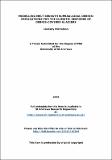Files in this item
Modelling melt beneath supraglacial debris : implications for the climatic response of debris-covered glaciers
Item metadata
| dc.contributor.advisor | Benn, Douglas I. | |
| dc.contributor.author | Nicholson, Lindsey | |
| dc.coverage.spatial | xix, 194, 156 p. | en_US |
| dc.date.accessioned | 2017-02-09T15:56:21Z | |
| dc.date.available | 2017-02-09T15:56:21Z | |
| dc.date.issued | 2005 | |
| dc.identifier.uri | https://hdl.handle.net/10023/10264 | |
| dc.description.abstract | Understanding how debris-covered glaciers respond to climate is necessary in order to evaluate future water resources and glacier flood hazard potential, and to make sense of the glacier chronology in mountain regions, In order achieve this, it is necessary to improve the current understanding of how surface debris affects glacier ablation rate, and to develop methods by which the ablation of debris-covered glaciers can be predicted under various climatic scenarios. This thesis develops a numerical surface energy balance model that uses simple meteorological data to calculate melt beneath a debris layer of given thickness and thermal characteristics. Field data from three contrasting sites demonstrate that the assumptions made within the model concerning the thermal properties of supraglacial debris are valid during most ablation conditions and that model performance is considerably better than previous models. Model results indicate that the effect of debris on melt rate is highly dependent on meteorological conditions. Under colder climates, thin debris can accelerate ice melt by extending the ablation period at both diurnal and seasonal scales. However, in milder mid- summer conditions, even a very thin debris cover inhibits melt rate compared to that of exposed ice. The new melt model is applied to produce the first quantified ablation gradients for debris- covered glaciers, and to model the evolution of ice surfaces under a debris layer of variable thickness. Modelled ablation gradients are qualitatively similar to hypothetical ones outlined previously, and quantitatively similar to those measured in the field. The ablation gradients are used to explore the factors affecting the response of debris-covered glaciers to climate change. Beneath a debris layer of variable thickness, the melt model produced ablation topography, as observed in the field, which underwent topographic inversion over time in response to debris redistribution. Debris thickness variability was found to cause calculated ablation rate to increase compared to that calculated using a mean debris thickness by one to two orders of magnitude, suggesting that melt calculations made on the basis of spatially averaged debris thickness may be inaccurate. | en_US |
| dc.language.iso | en | en_US |
| dc.publisher | University of St Andrews | |
| dc.subject.lcc | GB2405.N5 | |
| dc.subject.lcsh | Glaciers--Environmental aspects | en |
| dc.subject.lcsh | Thawing--Mathematical models | en |
| dc.subject.lcsh | Mass budget (Geophysics) | en |
| dc.subject.lcsh | Meltwater | en |
| dc.title | Modelling melt beneath supraglacial debris : implications for the climatic response of debris-covered glaciers | en_US |
| dc.type | Thesis | en_US |
| dc.contributor.sponsor | University of St Andrews | en_US |
| dc.type.qualificationlevel | Doctoral | en_US |
| dc.type.qualificationname | PhD Doctor of Philosophy | en_US |
| dc.publisher.institution | The University of St Andrews | en_US |
This item appears in the following Collection(s)
Items in the St Andrews Research Repository are protected by copyright, with all rights reserved, unless otherwise indicated.

